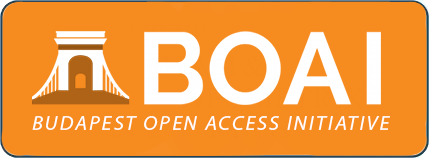Determinants of Financial Well-Being Among Malaysian University Students
The Role of Financial Behaviour as a Mediator
DOI:
https://doi.org/10.33102/jmifr.595Keywords:
Financial well-being, digital financial literacy, financial attitude, financial confidence, financial behaviourAbstract
The global issue of Financial Well-Being (FWB) among university students remains a contentious topic of discussion and growing concern. However, inconclusive findings necessitate a comprehensive understanding of potential antecedents to address this pressing issue. This study utilises psychological theories to examine the factors influencing FWB among university students, offering current insights and directions for future research. Data were collected from 299 Malaysian university students through an online survey and analysed using Partial Least Square-Structural Equation Modelling (PLS-SEM) via SmartPLS 4.0. The findings reveal that Digital Financial Literacy (DFL), financial confidence, and financial attitude significantly influence financial behaviour. In contrast, FWB is influenced by financial confidence and financial behaviour but not by DFL and financial attitude. Furthermore, financial behaviour successfully mediates the relationships between (i) DFL and FWB, (ii) financial confidence and FWB, and (iii) financial attitude and FWB. This study contributes to the growing literature on psychological theories and FWB, providing valuable insights for government, its agencies, regulators, and educational institutions. It highlights the need to enhance financial education curricula and awareness campaigns to foster positive financial habits and improve students’ FWB.
Downloads
References
Agensi Kaunseling dan Pengurusan Kredit. (2024). AKPK: Over 50,000 youths in debt due to credit cards, loans worth close to RM2b in total. https://bit.ly/3VUAJu0
Ajemunigbohun, S. S. &, & Ipigansi, P. (2022). Financial knowledge, financial confidence, and risk attitudes: Evidence from selected motor insurance policyholders in Nigeria. Fuoye Journal of Accounting and Management, 5(1), 1–22. https://fjam.fuoye.edu.ng/index.php/fjam/article/view/77
Ajzen, I. (1991). The theory of planned behavior. Organizational Behavior and Human Decision Processes, 50(2), 179–211. https://doi.org/10.1016/0749-5978(91)90020-T
Ajzen, I., & Fishbein, M. (1977). Attitude-behavior relations: A theoretical analysis and review of empirical research. Psychological Bulletin, 84(5), 888–918. https://doi.org/10.1037/0033-2909.84.5.888
Andrade, C. (2021). The inconvenient truth about convenience and purposive samples. Indian Journal of Psychological Medicine, 43(1), 86–88. https://doi.org/10.1177/0253717620977000
Aryan, L., Alsharif, A., Alquqa, E., Ebbini, M., Alzboun, N., Alshurideh, M., & Al-Hawary, S. (2024). How digital financial literacy impacts financial behavior in Jordanian millennial generation. International Journal of Data and Network Science, 8(1), 117–124. https://doi.org/10.5267/j.ijdns.2023.10.011
Aulia, A., Rahayu, R., & Bahari, A. (2023). The influence of digital financial literacy on financial well-being with financial behavior as a moderation variable: Communities in West Sumatra. Jurnal Akuntansi, 13(2), 141–149. https://doi.org/10.33369/jakuntansi.13.2.141-149
Barus, I. S. L., Lasniroha, T., & Bayunitri, B. I. (2024). Navigating the digital financial landscape: the role of financial literacy and digital payment behavior in shaping financial management among Generation Z student. Journal of Logistics, Informatics and Service Science, 11(7), 302–323. https://doi.org/10.33168/JLISS.2024.0716
Bhat, S. A., Lone, U. M., SivaKumar, A., & Krishna, U. G. (2024). Digital financial literacy and financial well-being – evidence from India. International Journal of Bank Marketing. https://doi.org/10.1108/IJBM-05-2024-0320
Bhatia, S., & Singh, S. (2023). Exploring financial well-being of working professionals in the Indian context. Journal of Financial Services Marketing, 29, 474–487. https://doi.org/10.1057/s41264-023-00215-x
Björklund Engström, V., & Puman, S. (2023). Lao students’ financial behavior and financial well-being: The role of gender, competence, confidence, and trust in bank systems [Master’s thesis, Linköping University]. DiVA. https://urn.kb.se/resolve?urn=urn:nbn:se:liu:diva-196218
Brüggen, E. C., Hogreve, J., Holmlund, M., Kabadayi, S., & Löfgren, M. (2017). Financial well-being: A conceptualization and research agenda. Journal of Business Research, 79, 228–237. https://doi.org/10.1016/j.jbusres.2017.03.013
Bushra & Mir, M. A. (2024). Digital financial literacy and financial well-being. In D. Singh, R. Bansal, S. Gupta, & Y. Ansari (Eds.), Emerging Perspectives on Financial Well-Being (pp. 57–73). IGI Global Scientific Publishing. https://doi.org/10.4018/979-8-3693-1750-1.ch003
Byrne, B. M. (2013). Structural equation modeling with Mplus: Basic concepts, applications, and programming (1st ed.). Routledge. https://doi.org/10.4324/9780203807644
Carton, F. L., Xiong, H., & McCarthy, J. B. (2022). Drivers of financial well-being in socio-economic deprived populations. Journal of Behavioral and Experimental Finance, 34, 1–14. https://doi.org/10.1016/j.jbef.2022.100628
Choung, Y., Chatterjee, S., & Pak, T. Y. (2023). Digital financial literacy and financial well-being. Finance Research Letters, 58, 1–7. https://doi.org/10.1016/j.frl.2023.104438
Cohen, J. (1988). Statistical power analysis for the behavioral sciences (2nd ed.). Routledge. https://doi.org/10.4324/9780203771587
Conner, M. (2020). Theory of planned behavior. In G. Tenenbaum, & R. C. Eklund (Eds.), Handbook of Sport Psychology (pp. 1–18). John Wiley & Sons. https://doi.org/10.1002/9781119568124.ch1
Conner, M., & Sparks, P. (2015). The theory of planned behaviour and the reasoned action approach. In M. Conner and P. Norman (Eds.), Predicting and changing health behaviour: Research and practice with social cognition models (3rd ed., pp. 142–188). Open University Press.
Consumer Financial Protection Bureau. (2015). Financial well-being: The goal of financial education. https://files.consumerfinance.gov/f/201501_cfpb_report_financial-well-being.pdf
DaCosta, B., Kinsell, C., & Nasah, A. (2013). Millennials are digital natives?: An investigation into digital propensity and age. In I. Management Association (Ed.), Digital Literacy: Concepts, Methodologies, Tools, and Applications (pp. 103–119). IGI Global Scientific Publishing. https://doi.org/10.4018/978-1-4666-1852-7.ch006
Devisakti, A., & Ramayah, T. (2019). E-Learning Usage Outcomes among University Learners: A Pilot Study. Journal of Education and E-Learning Research, 6(3), 149–155. https://doi.org/10.20448/journal.509.2019.63.149.155
Dornyei, Z. (2007). Research Methods in Applied Linguistics. Oxford University Press.
Dube, V. S., Asthana, K., H., & Abdullah, A. (2023). Digital financial literacy: An empirical study on millennials in India. Empirical Economics Letters, 22(2), 21–38. https://doi.org/10.5281/zenodo.8253419
Fauzi, M. A. (2022). Partial least square structural equation modelling (PLS-SEM) in knowledge management studies: Knowledge sharing in virtual communities. Knowledge Management & E-Learning, 14(1), 103–124. https://doi.org/10.34105/j.kmel.2022.14.007
Fornell, C., & Larcker, D. F. (1981). Evaluating Structural Equation Models with Unobservable Variables and Measurement Error. Journal of Marketing Research, 18(1), 39–50. https://doi.org/10.1177/002224378101800104
Fricker, R. D. (2008). Sampling Methods for Web and E-mail Surveys. In N. Fielding, R. M. Lee, G. Blank (Eds.) The SAGE Handbook of Online Research Methods (pp. 195–216). SAGE Publications Ltd. https://doi.org/10.4135/9780857020055.n11
Hair, J. F., Hult, G. T. M., Ringle, C. M., & Sarstedt, M. (2022). A primer on partial least squares structural equation modeling (PLS-SEM) (3rd ed.). SAGE Publications.
Hair, J. F., Ringle, C. M., & Sarstedt, M. (2011). PLS-SEM: Indeed a silver bullet. Journal of Marketing Theory and Practice, 19(2), 139–152. https://doi.org/10.2753/MTP1069-6679190202
Hair, J. F., Risher, J. J., Sarstedt, M., & Ringle, C. M. (2019). When to use and how to report the results of PLS-SEM. European Business Review, 31(1), 2–24. https://doi.org/10.1108/EBR-11-2018-0203
Hair, J. F., Sarstedt, M., Hopkins, L., & Kuppelwieser, V. G. (2014). Partial least squares structural equation modeling (PLS-SEM): An emerging tool in business research. European Business Review, 26(2), 106–121. https://doi.org/10.1108/EBR-10-2013-0128
Hasler, A., Lusardi, A., & Sconti, A. (2023). Development and testing of a comprehensive financial well-being measure. https://g53network.org/wp-content/uploads/2023/06/Sticha-Development-and-Testing.pdf
Henseler, J., Ringle, C. M. & Sarstedt, M. (2015). A new criterion for assessing discriminant validity in variance-based structural equation modeling. Journal of the Academy of Marketing Science, 43, 115–135. https://doi.org/10.1007/s11747-014-0403-8
Hernandez-de-Menendez, M., Escobar Díaz, C. A., & Morales-Menendez, R. (2020). Educational experiences with Generation Z. International Journal on Interactive Design and Manufacturing, 14(3), 847–859. https://doi.org/10.1007/s12008-020-00674-9
Hisham, N. A. N. R., Ismail, S., & Syed Mohamad, S. F. (2023). Malaysian consumer income and spending behaviour during the COVID-19 pandemic: An insight from Maqāṣid Al-Sharīʿah. ISRA International Journal of Islamic Finance, 15(3), 64–80. https://doi.org/10.55188/ijif.v15i3.611
Ishak, S. A., Ismail, S., & Abdullah, W. Z. W. (2022). The relationship between digital financial literacy and spending behaviour among undergraduate student. International Journal of Advanced Management and Finance, 3(2).
Jager, J., Putnick, D. L., & Bornstein, M. H. (2017). II. More than just convenient: The scientific merits of homogeneous convenience samples. Monographs of the Society for Research in Child Development, 82(2), 13–30. https://doi.org/10.1111/mono.12296
Johanson, G. A., & Brooks, G. P. (2010). Initial scale development: Sample size for pilot studies. Educational and Psychological Measurement, 70(3), 394–400. https://doi.org/10.1177/0013164409355692
Kamble, P. A., Mehta, A., & Rani, N. (2024). Financial inclusion and digital financial literacy: Do they matter for financial well-being?. Social Indicators Research, 171(3), 777–807. https://doi.org/10.1007/s11205-023-03264-w
Kan, M. P. H., & Fabrigar, L. R. (2017). Theory of planned behavior. In V. Zeigler-Hill, & T. Shackelford (Ed.), Encyclopedia of personality and individual differences (pp. 1–8). Springer, Cham. https://doi.org/10.1007/978-3-319-28099-8_1191-1
Khairi, M. L. (2024, September 21). PTPTN to take action against 430,000 defaulters [WATCH]. New Straits Times. https://www.nst.com.my/news/nation/2024/09/1108779/ptptn-take-action-against-430000-defaulters-watch
Khalisharani, H., Johan, I. R., & Sabri, M. F. (2022). The influence of financial literacy and attitude towards financial behaviour amongst undergraduate students: A cross-country evidence. Pertanika Journal of Social Sciences & Humanities, 30(2), 449–474. https://doi.org/10.47836/pjssh.30.2.03
Khazanah Research Institute. (2024). The financialization of our lives: Values and trade-offs. https://www.krinstitute.org/assets/contentMS/img/template/editor/KRI%20Report_The%20Financialization%20of%20our%20Lives.pdf
Koskelainen, T., Kalmi, P., Scornavacca, E., & Vartiainen, T. (2023). Financial literacy in the digital age - A research agenda. Journal of Consumer Affairs, 57(1), 507–528. https://doi.org/10.1111/joca.12510
Kumar, P., Pillai, R., Kumar, N., & Tabash, M. I. (2023). The interplay of skills, digital financial literacy, capability, and autonomy in financial decision making and well-being. Borsa Istanbul Review, 23(1), 169–183. https://doi.org/10.1016/j.bir.2022.09.012
Loo, M. W., Kuah, C., & Liew, F. M. (2023). Factors affecting subjective financial well-being of emerging adults in Malaysia. Proceedings of the 10th International Conference on Business, Accounting, Finance and Economics (BAFE 2022), 132–148. https://doi.org/10.2991/978-2-494069-99-2_11
Magli, A. S., Sabri, M. F., Rahim, H. A., & Othman, M. A. (2021). Influence of financial behavior, financial stress and locus of control on financial well-being among B40 households in Selangor during the pandemic. International Journal of Academic Research in Business and Social Sciences, 11(12), 467– 486. https://doi.org/10.6007/IJARBSS/v11-i12/11792
Malaysian Department of Insolvency. (2024). Bankruptcy Statistic. https://www.mdi.gov.my/images/documents/Statistics/Bankrupcy/BRIEFNOTEMEI2024KEBANKRAPAN.pdf
Manstead, A. S. R. (2011). The benefits of a critical stance: A reflection on past papers on the theories of reasoned action and planned behaviour. British Journal of Social Psychology, 50(3), 366–373. https://doi.org/10.1111/j.2044-8309.2011.02043.x
Morris, T., Maillet, S., & Koffi, V. (2022). Financial knowledge, financial confidence and learning capacity on financial behavior: A Canadian study. Cogent Social Sciences, 8(1), 1–13. https://doi.org/10.1080/23311886.2021.1996919
Muat, S., Fachrurrozi, F., & Sari, N. (2024). How do digital financial literacy, financial behavior, and skills affect financial well-being? An exploratory study on Gen Z. Integrated Journal of Business and Economics, 8(1), 728–744. https://doi.org/10.33019/ijbe.v8i1.851
Mukhtar, A. M. (2024, January 24). Youngsters not immune to online scams, says criminal analyst. New Straits Times. https://www.nst.com.my/news/nation/2024/01/1005209/youngsters-not-immune-online-scams-says-criminal-analyst
Najmi, A., Waller, T., Memarpour, M., Nair, D., & Rashidi, T. H. (2023). A human behaviour model and its implications in the transport context. Transportation Research Interdisciplinary Perspectives, 18, 1–20. https://doi.org/10.1016/j.trip.2023.100800
Nawang, W. R. W., & Shukor, S. A. (2023). Factors determining money management among university students. Journal of Wealth Management & Financial Planning, 10, 40–56. https://jwmfp.mfpc.org.my/wp-content/uploads/2023/11/40-56_Original-Research_Factors-Determining-Money-Management-Among-University-Students.pdf
Ng, J., & Ng, R. (2022, December 15). Commentary: As scams get more sophisticated, young and digitally savvy individuals are more likely to fall prey. Channel News Asia. https://www.channelnewsasia.com/commentary/pig-butchering-scam-love-investment-crypto-crime-prevent-3143866
Nunnally, J. C. (1978). An overview of psychological measurement. In B. B. Wolman (Eds.), Clinical Diagnosis of Mental Disorders (pp. 97–146). Springer, Boston, MA. https://doi.org/10.1007/978-1-4684-2490-4_4
Organisation for Economic Co-operation and Development. (2020). Advancing the digital financial inclusion of youth. https://www.oecd.org/daf/fin/financial-education/advancing-the-digital-financial-inclusion-of-youth.pdf
Ozili, P. K. (2018). Impact of digital finance on financial inclusion and stability. Borsa Istanbul Review, 18(4), 329–340. https://doi.org/10.1016/j.bir.2017.12.003
Palameta, B., Nguyen, C., Hui, T. S. W., & Gyarmati, D. (2016). The Link between financial confidence and financial outcomes among working-aged Canadians. Social Research and Demonstration Corporation. https://www.srdc.org/wp-content/uploads/2022/07/fcac-full-report-on-financial-confidence-en.pdf
Preacher, K. J., & Hayes, A. F. (2008). Asymptotic and resampling strategies for assessing and comparing indirect effects in multiple mediator models. Behavior Research Methods, 40(3), 879–891. https://doi.org/10.3758/BRM.40.3.879
Purwanto, A., & Sudargini, Y. (2021). Partial least squares structural equation modeling (PLS-SEM) analysis for social and management research: A literature review. Journal of Industrial Engineering & Management Research, 2(4), 114–123. https://jiemar.org/index.php/jiemar/article/view/168
Radianto, W. E. D., Kristama, B. Y., & Salim, I. R. (2021). Exploring the relationship between locus of control and financial behavior of accounting student from the social construction theory approach. Academic Journal of Interdisciplinary Studies, 10(2), 118–128. https://doi.org/10.36941/ajis-2021-0043
Rafien, N. S. M., Awang, A. H., & Kamis, R. (2022). The effects of financial knowledge, financial attitude and locus of control on financial well-being among students in Malaysian public university: An empirical investigation. International Journal of Academic Research in Business and Social Sciences, 12(12), 134–142. https://doi.org/10.6007/IJARBSS/v12-i12/15778
Rahman, M., Isa, C. R., Masud, M. M., Sarker, M., & Chowdhury, N. T. (2021). The role of financial behaviour, financial literacy, and financial stress in explaining the financial well-being of B40 group in Malaysia. Future Business Journal, 7(1), 1–18. https://doi.org/10.1186/s43093-021-00099-0
Rai, K., Dua, S., & Yadav, M. (2019). Association of financial attitude, financial behaviour and financial knowledge towards financial literacy: A structural equation modeling approach. FIIB Business Review, 8(1), 51–60. https://doi.org/10.1177/2319714519826651
Raj, P. S. (2021, September 15). Critical need for digital financial literacy. New Straits Times. https://www.nst.com.my/opinion/letters/2021/09/727515/critical-need-digital-financial-literacy
Ramayah, T. Cheah J. H., Chuah, F., Ting, H., & Memon, M. A. (2018). Partial least squares structural equation modeling (PLS-SEM) using smartPLS 3.0: An updated guide and practical guide to statistical analysis (2nd ed.). Pearson Malaysia Sdn. Bhd.
Respati, D. K., Widyastuti, U., Nuryati, T., Musyaffi, A. M., Handayani, B. D., & Ali, N. R. (2023). How do students’ digital financial literacy and financial confidence influence their financial behavior and financial well-being? Nurture, 17(2), 40–50. https://doi.org/10.55951/nurture.v17i2.154
Risher, J., & Hair Jr, J. F. (2017). The Robustness of PLS Across Disciplines. Academy of Business Journal, 1, 47–55. https://www.proquest.com/scholarly-journals/robustness-pls-across-disciplines/docview/2187380273/se-2
Robb, C. A., & Chy, S. (2023). Undergraduate financial knowledge, attitudes, and behaviors: The impact of financial life skills course on college students. Financial Planning Review, 6(1), 1–10. https://doi.org/10.1002/cfp2.1155
Roscoe, J. T. (1975). Fundamental research statistics for the behavioral sciences (2nd ed.). Holt, Rinehart and Winston.
Sabri, M. F., Abd Rahim, H., Wijekoon, R., Fardini, N., Zakaria, A. S. M., & Reza, T. S. (2020). The mediating effect of money attitude on association between financial literacy, financial behaviour, and financial vulnerability. International Journal of Academic Research in Business and Social Sciences, 10(15), 340–358. https://doi.org/10.6007/IJARBSS/v10-i15/8254
Sabri, M. F., Anthony, M., Law, S. H., Rahim, H. A., Burhan, N. A. S., & Ithnin, M. (2023). Impact of financial behaviour on financial well-being: Evidence among young adults in Malaysia. Journal of Financial Services Marketing, 29, 788–807. https://doi.org/10.1057/s41264-023-00234-8
Sabri, M. F., Wahab, R., Mahdzan, N. S., Magli, A. S., & Rahim, H. A. (2022). Mediating effect of financial behaviour on the relationship between perceived financial well-being and its factors among low-income young adults in Malaysia. Frontiers in Psychology, 13, 1–16. https://doi.org/10.3389/fpsyg.2022.858630
Sajuyigbe, A. S., Adegun, E. A., Adeyemi, F., Johnson, A. A., Oladapo, J. T., & Jooda, D. T. (2024). The interplay of financial literacy on the financial behavior and well-being of young adults: Evidence from Nigeria. Jurnal Ilmu Ekonomi Terapan, 9(1), 120–136. https://doi.org/10.20473/jiet.v9i1.56411
Sekaran, U. (2000). Research method for business (3rd ed.). John Wiley & Sons, Inc.
Setiawan, M., Effendi, N., Santoso, T., Dewi, V. I., & Sapulette, M. S. (2022). Digital financial literacy, current behavior of saving and spending and its future foresight. Economics of Innovation and New Technology, 31(4), 320–338. https://doi.org/10.1080/10438599.2020.1799142
Setiyani, R., & Solichatun, I. (2019). Financial well-being of college students: An empirical study on mediation effect of financial behavior. KnE Social Sciences, 3(11), 451–474. https://doi.org/10.18502/kss.v3i11.4026
Shim, S., Xiao, J. J., Barber, B. L., & Lyons, A. C. (2009). Pathways to life success: A conceptual model of financial well-being for young adults. Journal of Applied Developmental Psychology, 30(6), 708–723. https://doi.org/10.1016/j.appdev.2009.02.003
Sobaih, A. E. E., & Elshaer, I. A. (2023). Risk-taking, financial knowledge, and risky investment intention: expanding theory of planned behavior using a moderating-mediating model. Mathematics, 11(2), 1–17. https://doi.org/10.3390/math11020453
Suntornsan, S., Chudech, S., & Janmaimool, P. (2022). The role of the theory of planned behavior in explaining the energy-saving behaviors of high school students with physical impairments. Behavioral Sciences, 12(9), 1–18. https://doi.org/10.3390/bs12090334
Susanti, E. M., & Khadaffi, M. (2024). The influence of financial attitude on saving behaviour with financial behaviour as an intervening variable in postgraduate students University of Batam. International Journal of Advance Research and Innovative Ideas in Education, 10(3), 4799–4807. https://bit.ly/4gsLbAO
Syaliha, A., Sutieman, E., Pasolo, M. R., & Pattiasina, V. (2022). The effect of financial literacy, life style, financial attitude and locus of control to financial management behavior. Public Policy, 3(1), 52–71. https://stia-saidperintah.e-journal.id/ppj
Tommasetti, A., Singer, P., Troisi, O., & Maione, G. (2018). Extended theory of planned behavior (ETPB): Investigating customers’ perception of restaurants’ sustainability by testing a structural equation model. Sustainability, 10(7), 1–21. https://doi.org/10.3390/su10072580
Utkarsh, Pandey, A., Ashta, A., Spiegelman, E., & Sutan, A. (2020). Catch them young: Impact of financial socialization, financial literacy and attitude towards money on financial well‐being of young adults. International Journal of Consumer Studies, 44(6), 531–541. https://doi.org/10.1111/ijcs.12583
Vomberg, A., & Klarmann, M. (2022). Crafting survey research: A systematic process for conducting survey research. In Homburg, C., Klarmann, M., Vomberg, A. (Eds.), Handbook of market research (pp. 67–119). Springer, Cham. https://doi.org/10.1007/978-3-319-57413-4_4
Xiao, J. J. (2008). Applying behavior theories to financial behavior. In Xiao, J.J. (Eds.), Handbook of Consumer Finance Research (pp. 69–81). Springer. https://doi.org/10.1007/978-0-387-75734-6_5
Zaki, U. R. A., Rosli, M. H., Yahya, N. F., & Halim, H. (2020). The relationship of financial literacy and financial attitude towards financial behaviour: An empirical finding. International Journal of Business and Economy, 2(4), 13–24. https://myjms.mohe.gov.my/index.php/ijbec/article/view/11403
Zikmund W. G., Carr J. C., & G. M. (2013). Business research methods. Cengage Learning.
Zikmund, W. G. (2003). Business research methods (7th ed.). Thomson.
Zolkeplee, S. Z., Hamed, A. B., & Ogunbado, A. F. (2018). Determinant factors of student's perception toward educational loan repayment. The Journal of Muamalat and Islamic Finance Research, 15(1), 95–108. https://doi.org/10.33102/jmifr.v15i1.102
Downloads
Published
How to Cite
Issue
Section
License
Copyright (c) 2025 Wan Rasyidah Wan Nawang, Umie Maisarah Kamarudin, Sid Ahmed Boucif

This work is licensed under a Creative Commons Attribution 4.0 International License.















